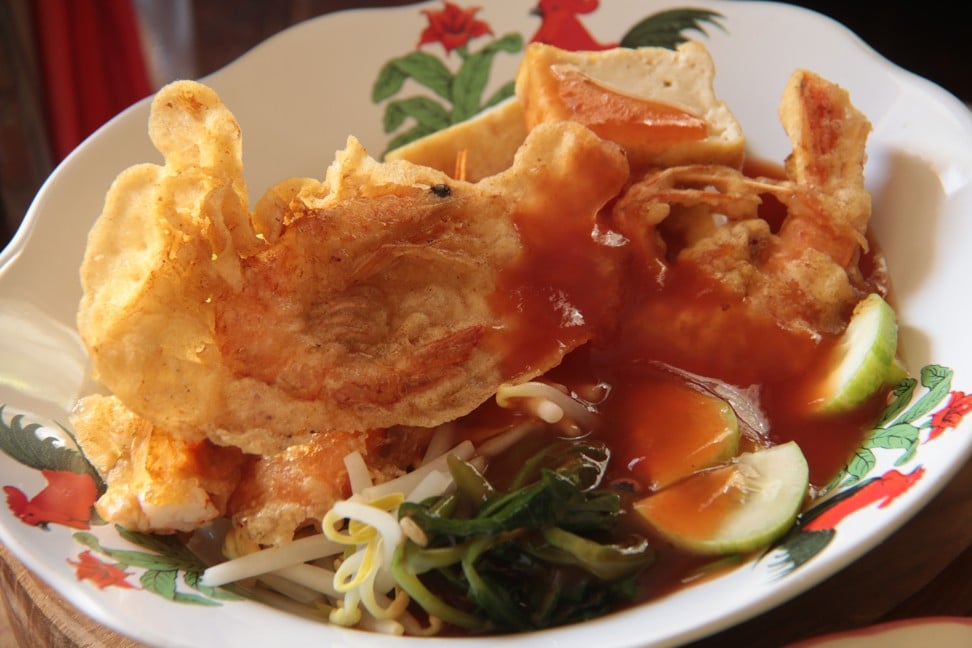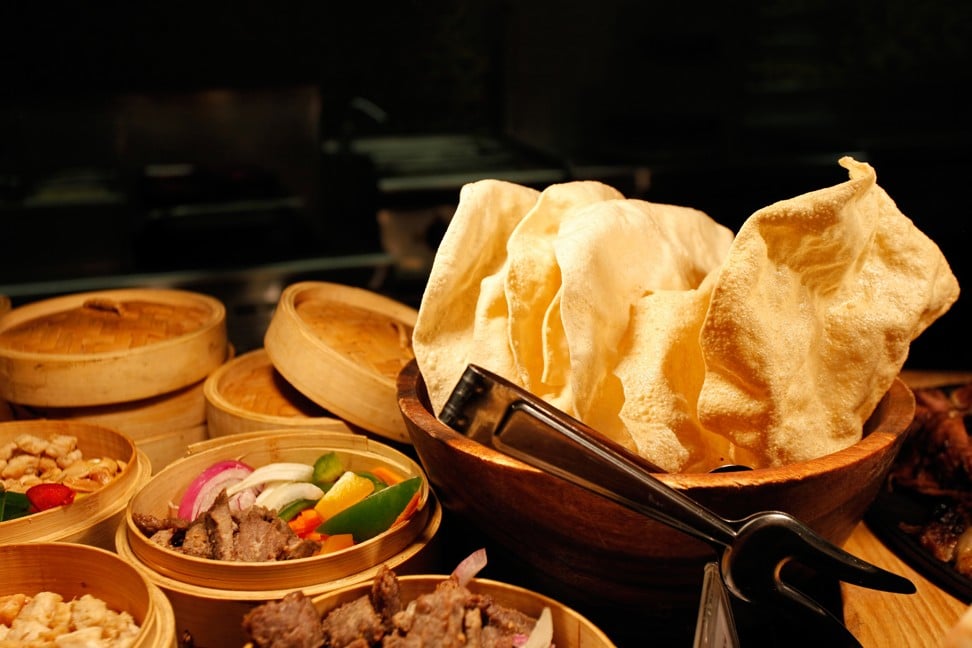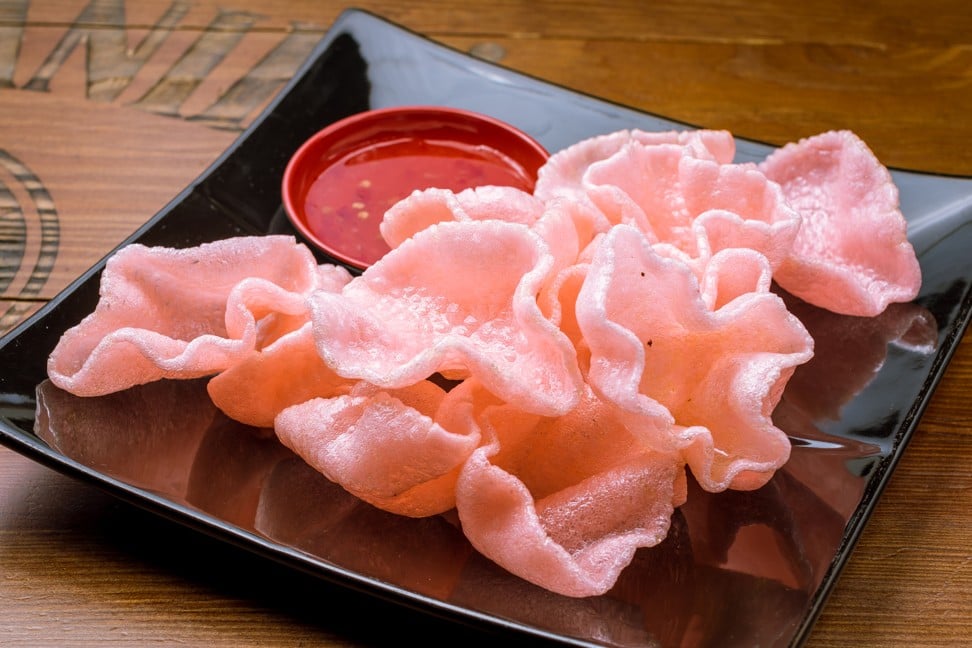Did prawn crackers originate from Malaysia or Indonesia, and which country has the better version?

Prawn crackers are as ubiquitous and as popular in Southeast Asia as potato crisps are in the west. They are however, more than a snack – and predate the crisp.
“As far as we know, they appeared first in West Malaysia in the 16th century. Legend states that leftover crushed prawn heads from a feast were used to make the very first batch,” says celebrity chef and street food expert, Will Meyrick, who has five restaurants in Bali and one in Hong Kong. Called keropok in Malaysia and krupuk udang in Indonesia, they are associated most closely with these two countries.
Deceptively complex
There is more to the traditionally made crackers than one might imagine, Meyrick explains. “Prawn crackers are made from a mixture of prawns, tapioca flour and water. This mixture is then rolled out, steamed and sliced. They are then sun-dried to eliminate any remaining moisture to achieve maximum crispiness.”
Can this quirky Korean beginner’s guide to veganism convert meat lovers?
Next comes the cooking. “The dried raw crackers are then deep fried in high-heated oil and, within a few seconds, they grow from thumb-sized semi-transparent wafers to fluffy crackers. Much like popcorn, the water binds to the starch, expanding as it turns into steam.”
Executive chef, Lim Soon-leong, of Shangri-La's Rasa Sayang Resort & Spa Penang, Malaysia says, “That process is a tried and tested method of making prawn crackers. Some people opt for the larger prawns while some go for fine shrimp. In Malaysia, it is also optional to add pepper, spices and salt to the dough. For crunchier crackers, some baking soda is added.”
More than a snack

While they are a snack they are so much more than that, often playing an integral textural (and taste) role in a dish. Lim notes, “These crackers were originally made as both a snack and also a backup source of food to consume and to sell in times of bad weather when fisherfolk could not go to sea.”

At the resort’s signature restaurant Spice Market Café, Lim says they are favoured by guests as a snack and as part of an appetiser. They can also be used to scoop up food, in a similar way to a spoon.
Meyrick thinks that prawn crackers go well with almost everything in Indonesian cuisine. “For me, the best combination is to have soto (a traditional soup made with broth, meat and vegetables) or rawon (a strong rich tasting beef black soup) with some prawn crackers.”
Can eating sushi be bad for your health?
He believes it is ironic that a typical street-food item is now part of the restaurant scene. “Crackers are common snacks you can find everywhere in Indonesia. They are an affordable, and real common food here. The fact it’s now used in the Asian fusion restaurant scene is ironic, because from basic street food, it has become part of modern reinterpreted recipes. For example, some mix squid ink, so you have black krupuk, others use them as toasts for canapés.”
Wait, tempura isn’t Japanese? So where is it from?
Prawn and beyond
In Malaysia, Lim says that most prawn crackers are similar due to the same ingredients, with subtle differences in thickness, texture and any added spices. One that stands out is from the east coast of Malaysia. “The state of Terengganu is known for its keropok lekor, a style of cracker made from fish paste mixed with tapioca flour, kneaded into longish rounded dough strips, cut into thin slices, deep fried and served fresh on the spot.”
Indonesia is home to the most varieties of crackers, with prawn simply being the best known globally. Meyrick also serves krupuk peyek (fried crackers with raw peanuts) and krupuk babi, which takes its flavour from pork skin, and is a traditional snack in Bali. The crackers can also be made from other seafood, including mackerel.
In Vietnam, its version, bánh phồng tôm has a variety of ingredients, including cuttlefish, onion, garlic and spices.
Is it authentic?

The best prawn cracker in Indonesia, says Meyrick, come from Sidoarjo – but that doesn’t mean they’re the best in the world.
“As a fundamental rule in cuisine, the taste, texture and look mostly depends on the origin of your ingredients. For example, nothing beats a French baguette outside France. I believe that the same applies to the krupuk found in each Southeast Asian country. Plus, the starch used differs from one country to another. Cassava is preferred in Thailand, while sago is more popular in Malaysia and Indonesia.”
How exactly is Asian fish sauce made, and who makes it better?
Tongue stickers
The thing I love most about prawn crackers is the way they melt on the tongue – the reason I eat one after another. Meyrick says there is science behind this. “That’s chemistry: due to their porous texture, they soak up the saliva on your tongue.”
Where are Singapore noodles from? How are century eggs made? Are French fries improperly named? And what’s the final verdict on where tikka masala was created? With the Origins series, STYLE delves into the often surprising beginnings of iconic dishes or foods, how they’ve evolved over time and the many ways they’re enjoyed today.
Want more stories like this? Sign up here. Follow STYLE on Facebook, Instagram, YouTube and Twitter .

Called keropok in Malaysia and krupuk udang in Indonesia, prawn crackers are associated most closely with these two countries, even though they are popular throughout Southeast Asia – and the world